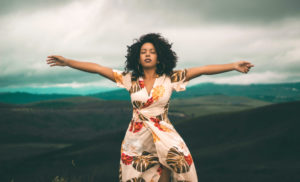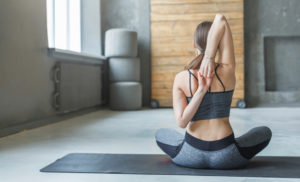Camel Pose

Meaning: The name is derived from the Sanskrit word उष्ट्रासन – Ustra, meaning “camel,” and Asana, meaning “pose”.
Yoga types: Hatha yoga.
Level: Intermediate level.
Strengthens: Back Muscles, Back of Thighs, and Buttocks.
Stretches: The front of the body including the Chest, Abdomen, Quadriceps.
Contraindications: Neck injury, Back injury, Spondylitis, Abdominal Hernia, suffer from Migraines. You shouldn’t practice Camel Pose if you are pregnant or menstruating.
Ustrasana Mythology
Ustrasana is one of the thirty-two postures taught in the second chapter of the Gheranda Samhita – a Sanskrit text of Yoga in Hinduism: “Lie prone with the legs upturned and crossed. Holding the crossed legs with hands, contract forcibly the abdomen and the mouth. This is called Ustranga by the sages”.
The 17th-century Gheranda Samhita Sanskrit text of Yoga is one of the three classic texts of Haṭha-yoga: a major branch of Yoga, sharing similarities with the Yoga system taught by Patanjali, though claiming its own mythical founder known as Matsyendranātha.
The Essence Of Ustrasana
Camels teach us to stay the course and trust in the outcome. They represent fortitude and determination. Camels have a gift of accomplishing the impossible, and when we bring our bodies into this pose, we awaken that same gift inside of us.
With consistent camel pose practice, we will begin to confront and explore what we so often try to hide away. We will find the source of strength that will sustain us even in the sometimes harsh climates of our lives.
Benefits Of Ustrasana
The main physical benefits of Camel Pose include:
- Stretches the front of the body.
- Stretches the chest.
- Strengthens arms.
- Helps with mobility in the shoulders and upper back.
- Strengthens the legs and back.
- Opens up the hips, stretches hip flexors.
On a spiritual and emotional level this pose:
- Relaxes the mind.
- Promotes a deep sense of trust in the self and the body, as well as feelings of inner strength and fortitude.
- Opens the heart chakra – anahata.
- Forces to overcome fears and trust your own body.
How To Do Ustrasana
- Start on the knees with the shins on the earth. Have your knees under your hips and your legs parallel to each other behind you.
- Bring your hand to your lower back. Fingers can be facing up towards the sky or down towards the earth.
- Lengthen the tailbone down to the ground and engage the core gently by drawing the navel in and up towards the spine.
- Lengthen your spine and start to back bend.
- Press your pelvis towards, make sure you are not gripping your glutes, lift through your sternum.
- Place your hands on your heels and gently push your hips forward a little more and expand your chest.
- Keep the neck straight.
- To deepen the pose, place your hands flat on your feet, palms to soles, with your fingers pointing in the same direction as your toes.
- After 5 or more breaths tone your pelvic floor and abdomen, and lift from your sternum, bring your hands onto your waist as you lift up, and then shift forward into Child’s Pose.

SOURCE:
Ushtrasana, Ushtra-asana, Uṣṭrāsana: 3 definitions – https://www.wisdomlib.org/definition/ushtrasana
Get a Free Guide for Improving Your Yoga Practice
Yoga is a way to achieve inner balance, to promote a unique attitude to life, and deepen the spiritual way to live.
We at The Wild Essence want people to feel good, that’s why we inspire people to practice yoga.

Improving your yoga practice will help you:
get more creative and widen your possibilities
see your own practice in a new light
keep your yoga practice forever evolving
Sign up with your email address to receive a free PDF.
Camel Pose Meaning: The name is derived from the Sanskrit word उष्ट्रासन – Ustra, meaning “camel,” and Asana, meaning “pose”. Yoga types: Hatha yoga. Level: Intermediate level. Strengthens: Back Muscles, Back of Thighs, and Buttocks. Stretches: The front of the body including the Chest, Abdomen, Quadriceps. Contraindications: Neck injury, Back injury, Spondylitis, Abdominal Hernia, suffer from Migraines. You shouldn’t practice Camel Pose Read More
Read More







